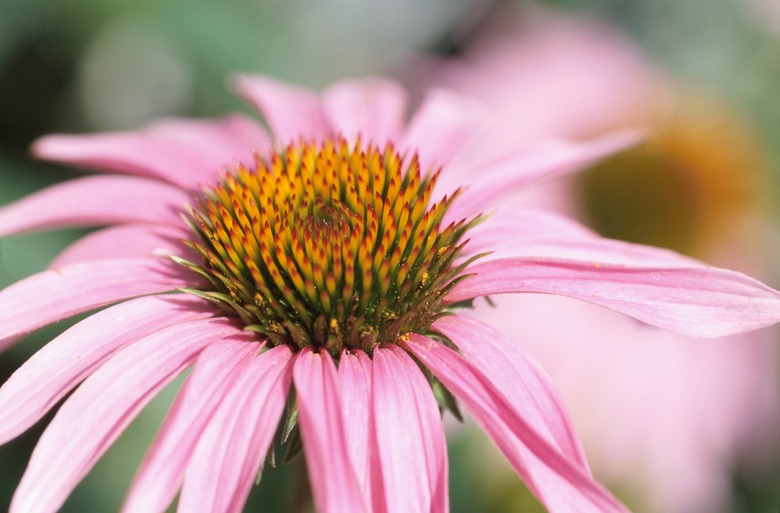What Part Of A Plant Makes Pollen?
Although some people are allergic to pollen, the role pollen plays in the life cycle of a plant is nothing to sneeze at. Flowering plants, called angiosperms, produce pollen in a male floral part called the stamen, comprised of a stem-like filament and pollen-shedding pod called the anther. In non-flowering plants, called gymnosperms, pollen is made in male-gendered cones.
Although some people are allergic to pollen, the role pollen plays in the life cycle of a plant is nothing to sneeze at. Flowering plants, called angiosperms, produce pollen in a male floral part called the stamen, comprised of a stem-like filament and pollen-shedding pod called the anther. In non-flowering plants, called gymnosperms, pollen is made in male-gendered cones.
Flower Parts
Flowering plants, or angiosperms, create structures to exchange genetic codes in the process of making seeds. Flowers are this specialized structure. Although flowers may have both male and female floral parts, some plant species have flowers that are single-gendered, having male or female parts in separate flowers.
The female part of the flower is known as the pistil and is generally found in the center of the flower. The pistil is comprised of stigma, the style and the ovary.
- Although some people are allergic to pollen, the role pollen plays in the life cycle of a plant is nothing to sneeze at.
- In non-flowering plants, called gymnosperms, pollen is made in male-gendered cones.
The male part of the flower is known as the stamen and usually surrounds the female pistil.
The Stamen
The individual male floral part is referred to as the stamen, or androecium. A stamen is made up of a thin stem called a filament and pollen-filled sacs called an anther. Often each flower has multiple stamens.
The Filament
A filament is a thin, thread-like stalk of the stamen. It physically supports and carries the pollen-making anther at its tip, providing a means for water, nutrients and hormones to permit the development of the anther as the flower matures.
The Anther
At the tip of the stamen's filaments is the anther, which is a single or collection of pollen sacs where pollen is created, ripened and released. A pollen grain is minute in size and is shaped uniquely per each plant species.
- The male part of the flower is known as the stamen and usually surrounds the female pistil.
Pollen
Each pollen grain is filled with male gametophytes of the plant. A gametophyte contains the genetic code, DNA, of the plant in one-half the amount. Once a pollen grain reaches and fertilizes the ovary of the female flower part, the two halves of the DNA code merge and form a viable seed that can later develop into a plant.
Cones
In non-flowering plants, called gymnosperms, no flowers are produced, but reproduction takes place via differently gendered cones. Cycads and conifers like pines and spruces are an example. Male cones are small, thin, cylindrical structures that spilt open to shed copious amounts of pollen. Wind carries this pollen, distributing it upon nearby female cones and subsequently fertilizing ovaries in a ripe cone.
- Each pollen grain is filled with male gametophytes of the plant.
- Once a pollen grain reaches and fertilizes the ovary of the female flower part, the two halves of the DNA code merge and form a viable seed that can later develop into a plant.
